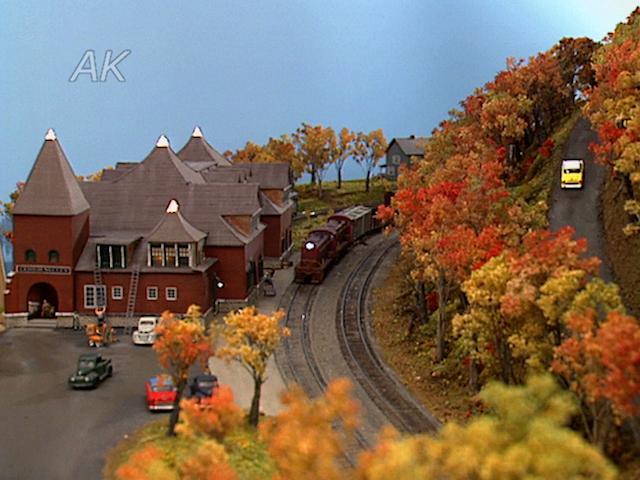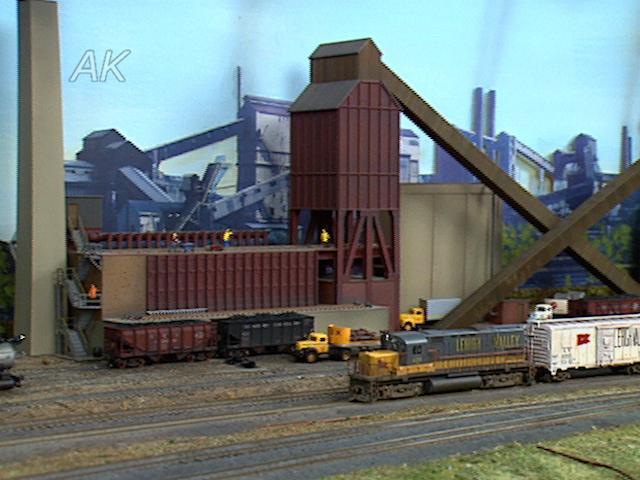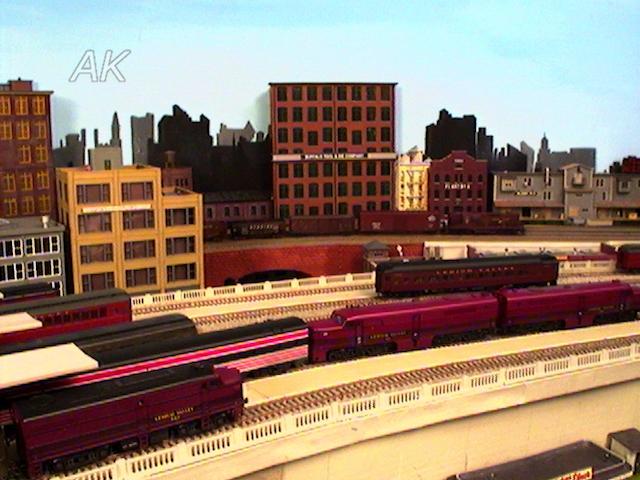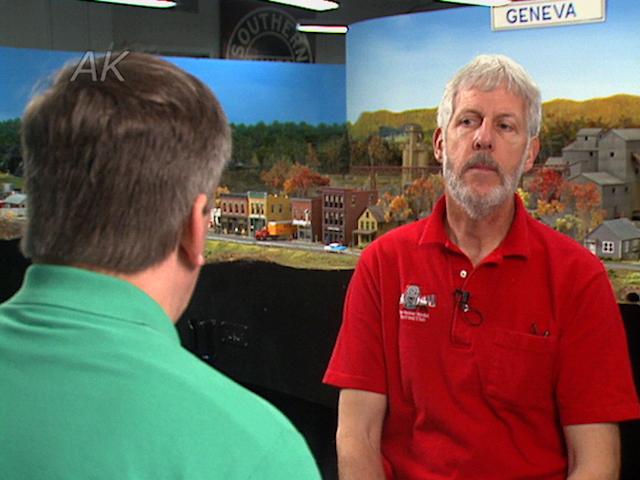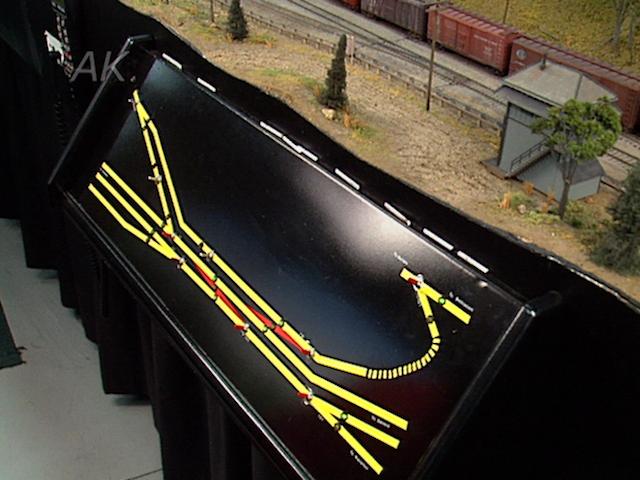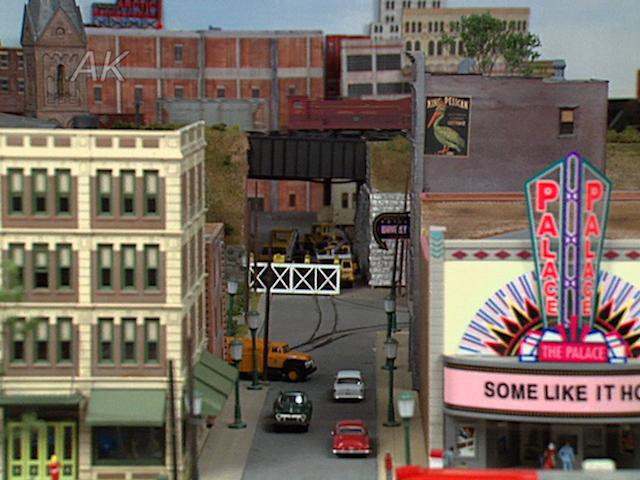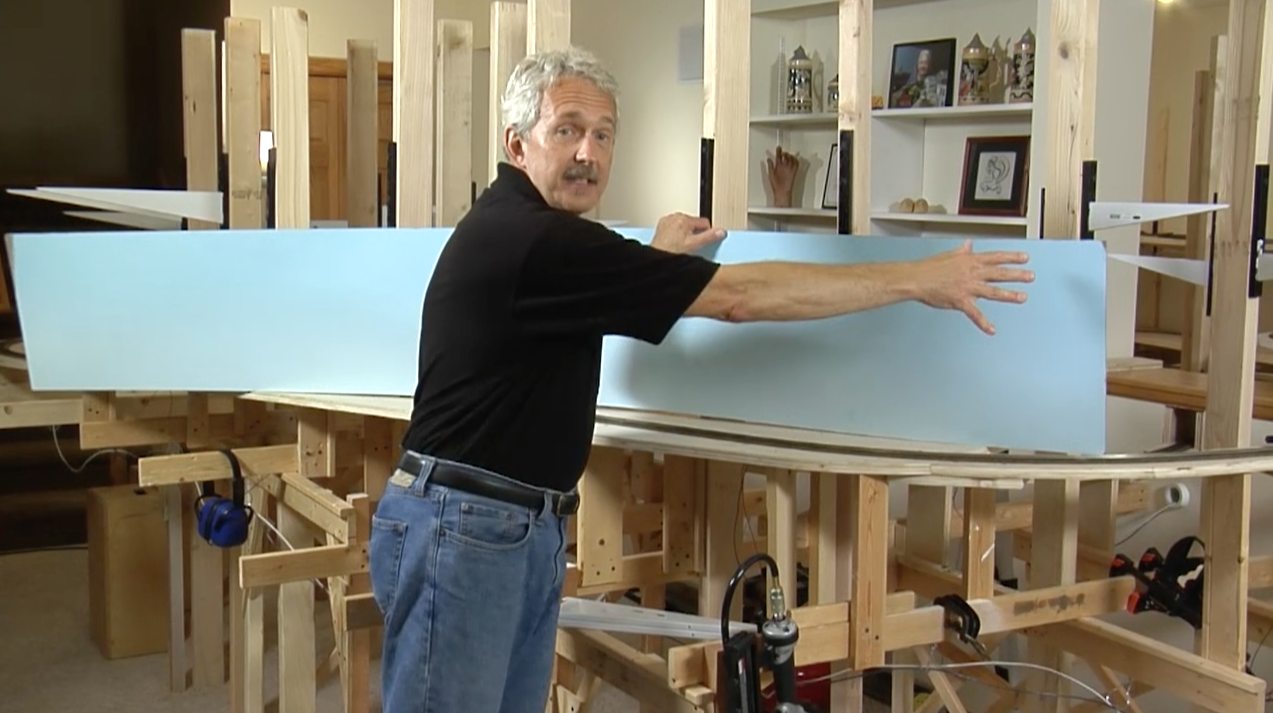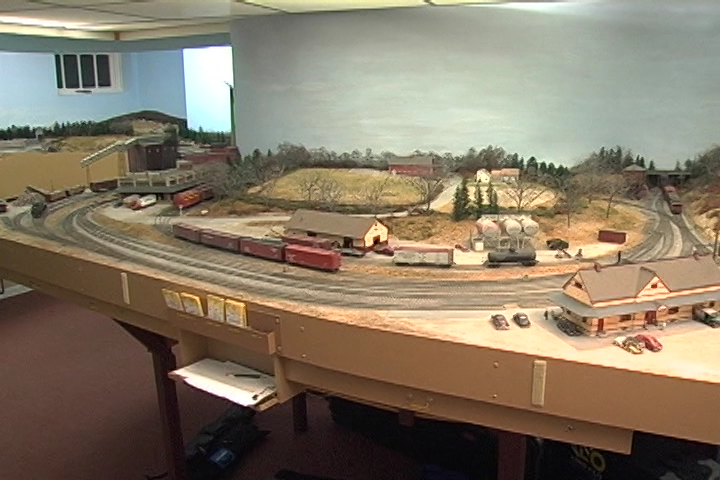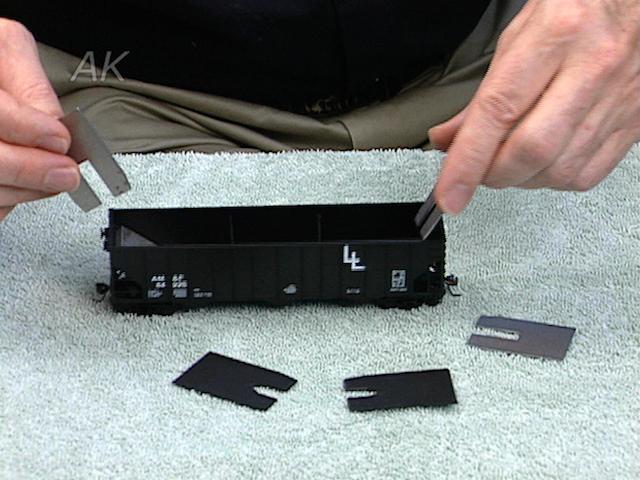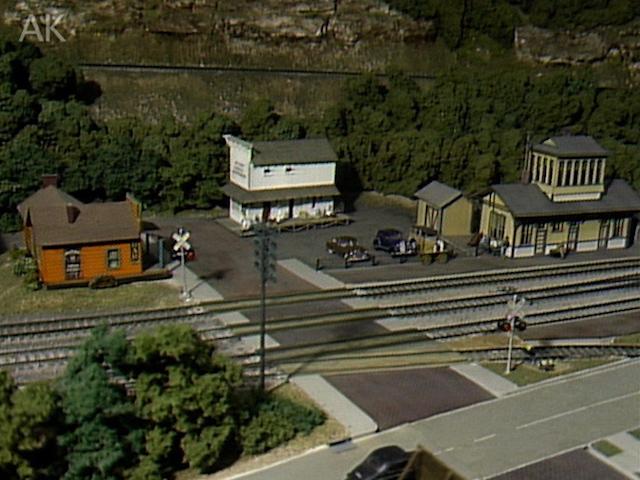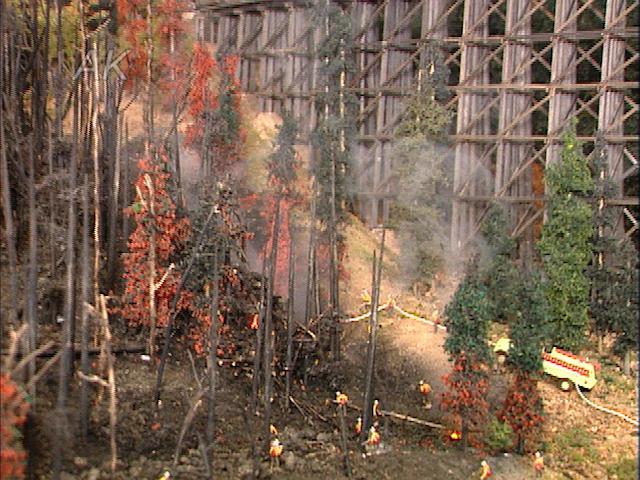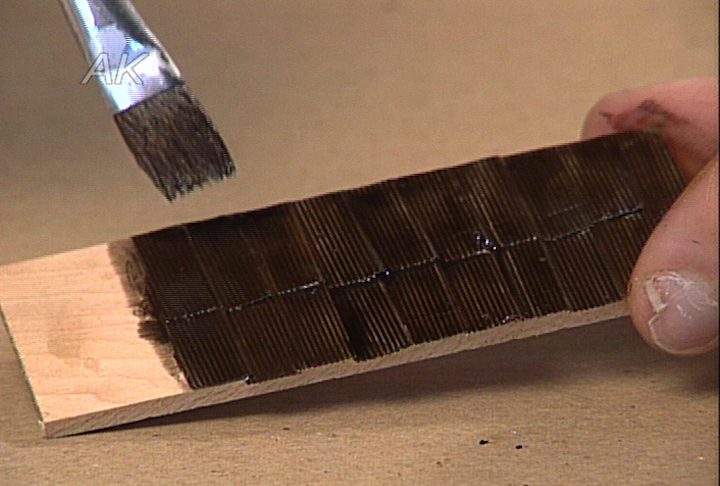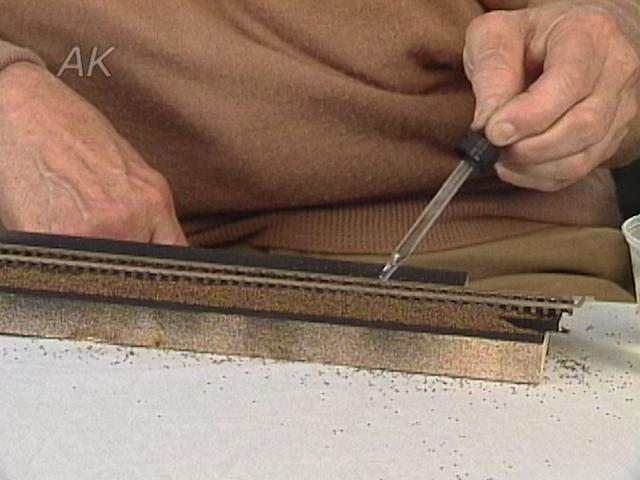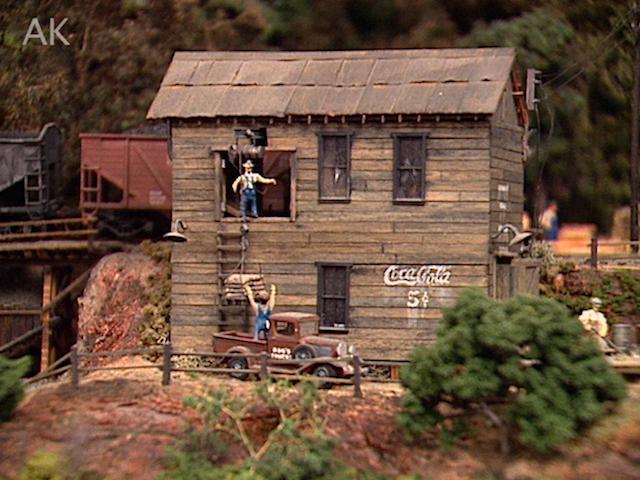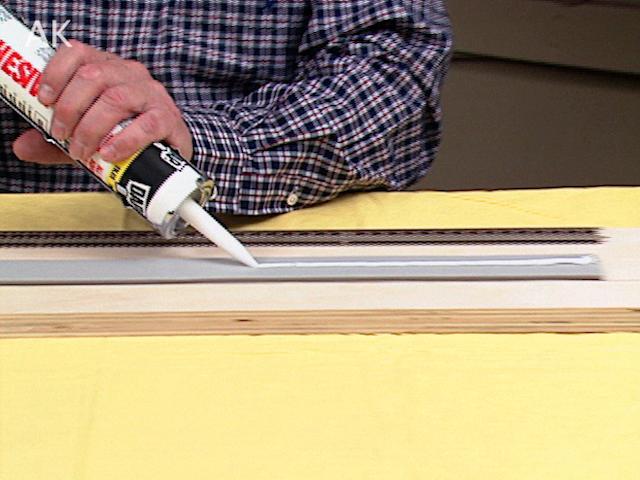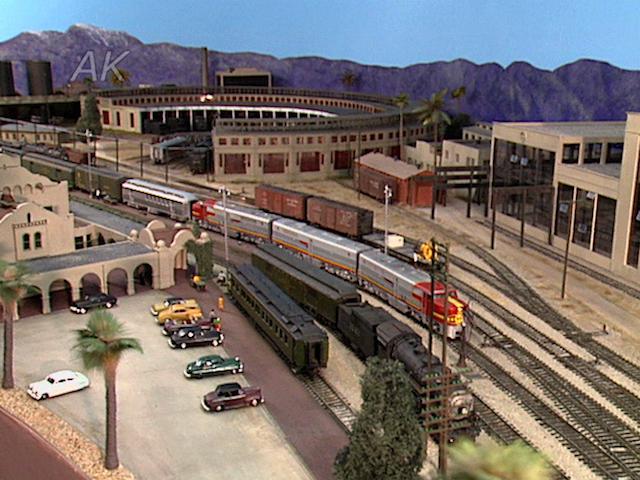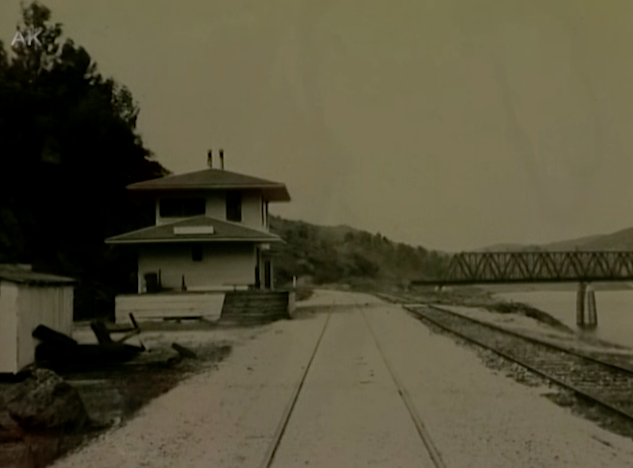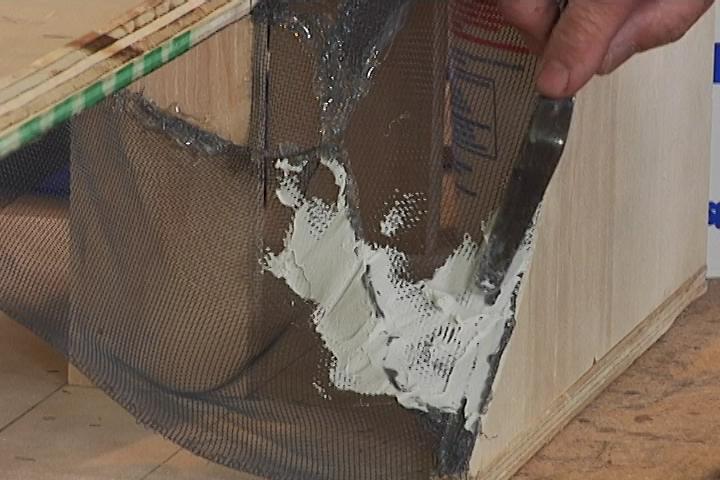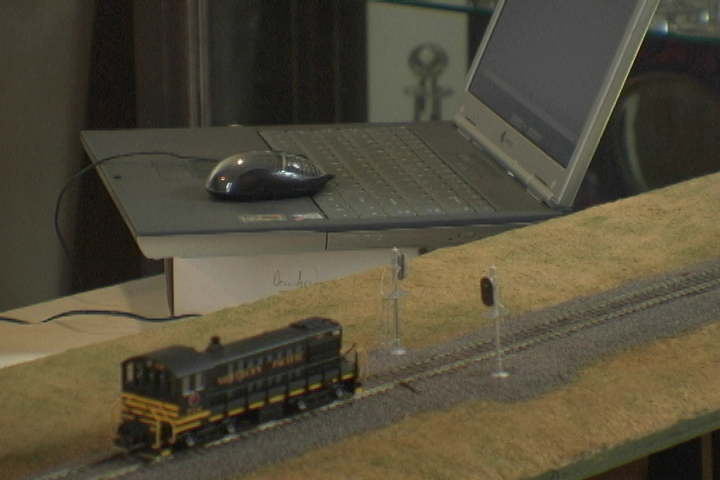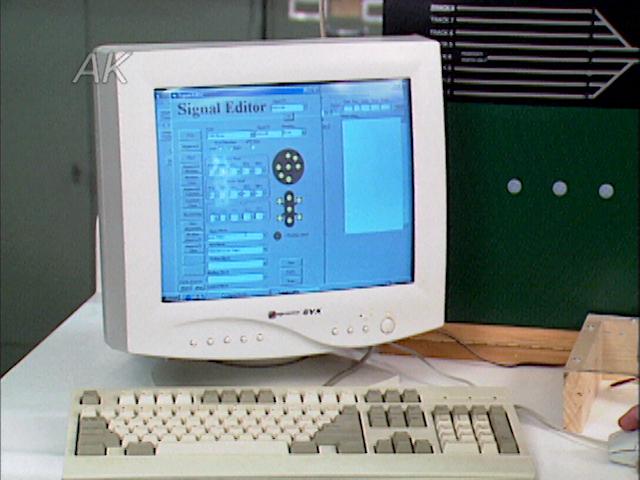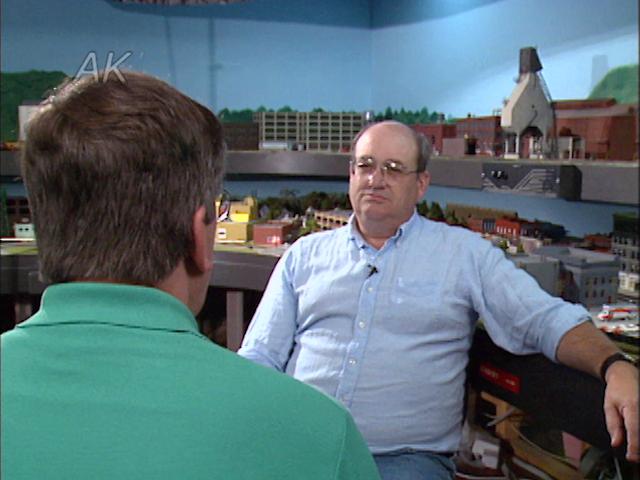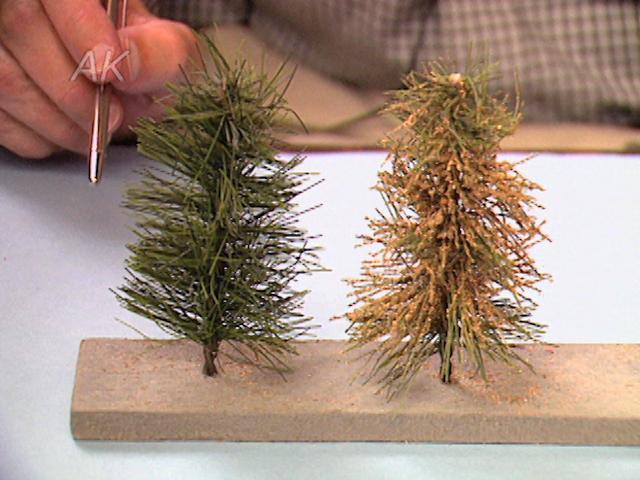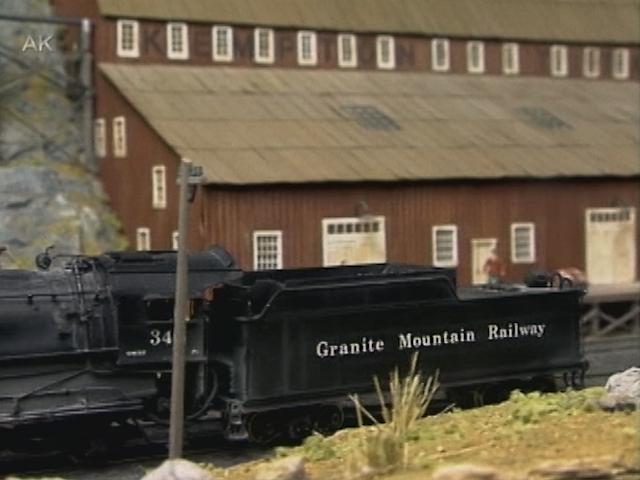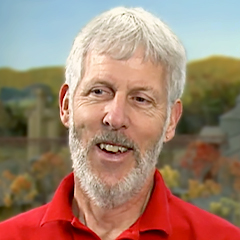
Reliable Track Work on Seneca Valley Lines
Tom McCullochOne of the things Mark Rossiter enjoys most about working on the Lehigh Valley model railroad is the track laying and the preparation for the track line. The Rochester Model Railroad Club uses three quarter inch plywood for their sub road bed, and covers that with three eighths inch upson board. The upson board is staggered on top of the joint to promote smooth and reliable operation. The one thing to avoid is stacking joints between the plywood upson board and the homabed roadmap.
Once the road bed has been tacked down and glued, the next step is to apply a little bit of drug joint compound/drywall compound to help smooth out some of the nail dimples and the various little rough spots and undulations in the roadbed. Before painting the roadbed, he ensures that the drywall compound has been lightly sanded again to get off any uneven and rough surfaces.
In preparation for the next step, Mark paints over the roadbed with a latex light gray color that helps to seal the paper products against moisture. It also helps to hide the drywall compound so that there won’t be any white spots showing through when putting down the track and the ballast.
Once the roadbed is ready to start putting down track, it’s time to spike. They spike about every 10 ties on each side of the rail for stability. It’s always nice to have a couple of track gauges handy to make sure that the work is nice and straight. Every few feet, Mark uses a small level to make sure that the track is nice and level. Sometimes a little shim under one of the rails might be needed to make sure it’s smooth and even.
To watch more from Allen Keller’s Great Model Railroad series or to learn step-by-step hand laying track, check the Model Railroad Academy archives.
Explore videos by Tom McCulloch
You may be interested in
Premium Membership
Unlock exclusive member content from our industry experts.
- 24/7 Access to Premium Model Railroading Videos, Projects, and Tips
- Step-by-Step Instructional Guides & Layout Plans
- 50% Off Video Downloads Purchased in the Model Railroad Academy Shop
- Access to Ask the Expert Program
Unlock exclusive member content from our industry experts.
- 24/7 Access to Premium Model Railroading Videos, Projects, and Tips
- Step-by-Step Instructional Guides & Layout Plans
- 3 Full-Length Video Downloads to Watch Offline
- 50% Off Video Downloads Purchased in the Model Railroad Academy Shop
- Access to Ask the Expert Program
Gold Membership
$326 Value
Get everything included in Premium plus exclusive Gold Membership benefits.
- 24/7 Access to Premium Model Railroading Videos, Projects, and Tips
- Step-by-Step Instructional Guides & Layout Plans
- 9 Full-Length Video Downloads to Watch Offline
- 2 Full-Length Classes to Keep for Life
- 2 Downloadable Guides
- Discounts on Purchase-to-Own Content in the Model Railroad Academy Shop
- Access to Ask the Expert Program
- Exclusive GOLD LIVE Streaming Events
